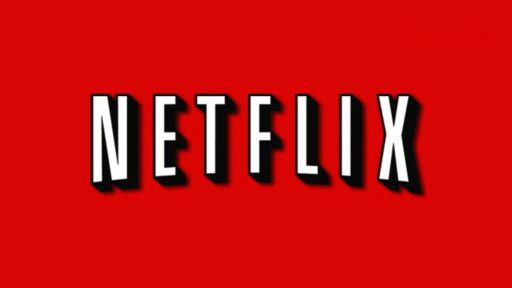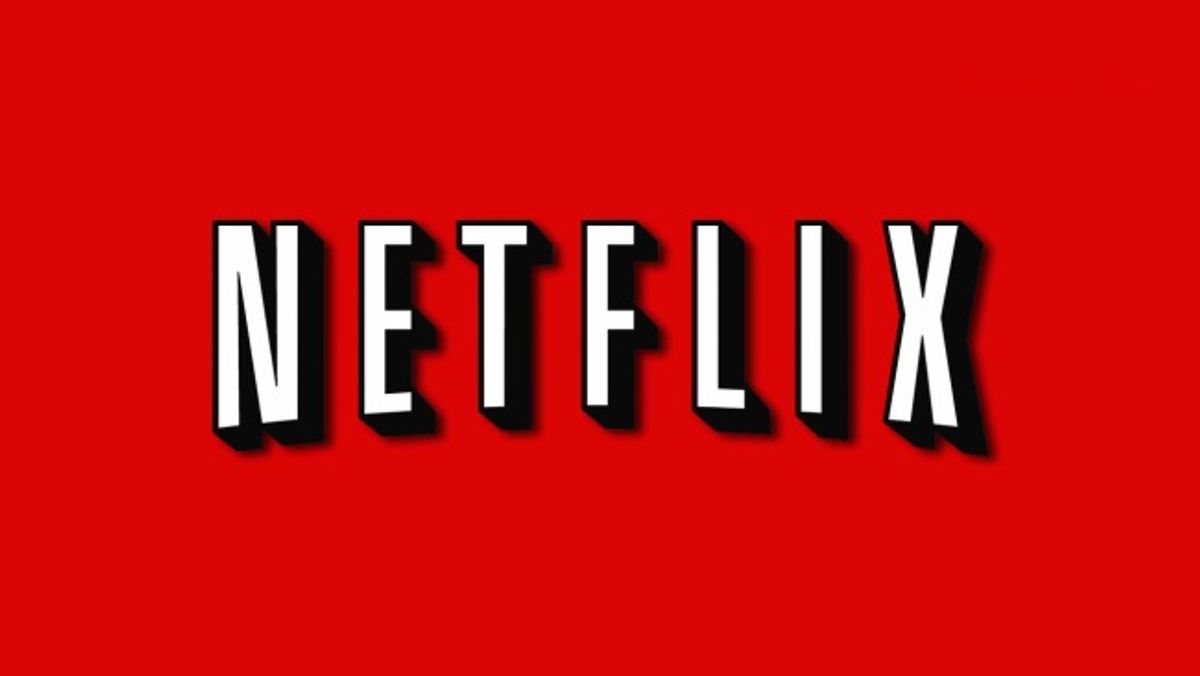Netflix has been a dominant force in the streaming industry, but its stock price is more than just a number; it’s a reflection of the company’s current standing in the fiercely competitive streaming wars. The stock’s performance is influenced by strategic innovations, market competition, financial indicators, cultural impact, and future projections. As we dissect the factors contributing to Netflix’s stock price, we uncover insights into its resilience and adaptability in an ever-evolving market.
Key Takeaways
- Netflix’s 27% stock increase this year signals strong market confidence, backed by strategic innovations like advertising, gaming, and live sports.
- Morgan Stanley’s upgraded price target from $600 to $700 for Netflix reflects an optimistic outlook and a forecasted 25% CAGR, emphasizing its long-term growth potential.
- Despite a competitive landscape, Netflix’s pricing power remains robust, with successful price hikes correlating with continued subscriber growth and increased revenue per user.
- Netflix’s premium valuation is justified by its market dominance, cultural influence, and the ability to monetize initiatives such as password sharing and ad integration.
- Investors are considering Netflix’s financial indicators, such as a forward P/E ratio of 36.9 and a market cap of $244.35B, as they evaluate its position against other streaming stocks.
Netflix’s Stock Surge: A Reflection of Strategic Innovation


Impressive Stock Performance and Analyst Optimism
Netflix’s stock has been on an impressive upward trajectory, buoyed by a wave of analyst optimism. Morgan Stanley recently raised Netflix’s price target from $600 to $700, indicating a strong belief in the company’s growth potential. This adjustment reflects a forecasted 11.3% increase in stock value, underscoring the confidence in Netflix’s strategic direction.
The streaming giant’s foray into new areas such as advertising, gaming, and live sports is seen as a pivotal move. Analysts predict a robust 25%-30% Compound Annual Growth Rate (CAGR) from 2024 to 2028, highlighting the company’s innovative approach to diversifying its revenue streams.
Netflix’s stock surge is not just a number—it’s a testament to the company’s agility in adapting to market demands and its relentless pursuit of strategic innovation.
While the broader market faces challenges, Netflix’s stock performance stands out as a beacon of analyst confidence. The company’s ability to maintain momentum amidst market fluctuations is a key factor in its current valuation.
Strategic Expansion into New Revenue Streams
Netflix’s agility in adapting to the evolving media landscape is evident in its strategic expansion into new revenue streams. The company has recognized the importance of diversifying beyond its traditional subscription-based model to include advertising-supported options and interactive content such as games. This not only opens up new avenues for monetization but also enhances user engagement.
- Advertising’s Big Role: The introduction of ad-supported tiers caters to a broader audience, tapping into the market of viewers who prefer lower-cost options.
- New Faces & Spaces: The entry into gaming and interactive media is a bold move that capitalizes on the convergence of entertainment and technology.
- Monetization of New Initiatives: Efforts to monetize password sharing and other new features are still in their infancy but hold the potential for significant revenue growth.
The expansion into these areas is a proactive response to the challenges of content saturation and the need to retain and grow its subscriber base. It’s a testament to Netflix’s commitment to innovation and its foresight in anticipating market trends.
The Impact of Pricing Power on Subscriber Growth
Netflix’s ability to adjust pricing while maintaining subscriber growth is a testament to its market strength. In a bold move last October, the company raised prices on its Basic plan in the U.S. by $2 per month, yet this did not deter the addition of 2.8 million net new users in the region. This 3% increase in average revenue per member signals that consumers are willing to pay a premium for Netflix’s service, underscoring its position as the top streaming choice.
The company’s pricing power is not just about increasing revenue; it’s a strategic tool that reflects consumer loyalty and the perceived value of the service.
While Netflix’s pricing strategy appears successful, it’s important to note the challenges ahead. The company must navigate a competitive landscape and innovate to retain and grow its subscriber base. Initiatives like password sharing, ads, and games are yet to show their full potential in terms of monetization. As Netflix prepares for more price hikes in 2024, it’s clear that strong subscriber growth remains a cornerstone of its strategy.
The Competitive Edge in the Streaming Battlefield


Navigating the Challenges of Content Saturation
In the fiercely competitive streaming landscape, content saturation has emerged as a significant hurdle for platforms striving to capture and retain viewers’ attention. With a plethora of options available, streaming services are compelled to innovate continuously to stand out.
- Live Broadcasting: A trend that’s gaining momentum, with platforms like Twitch and YouTube Live at the forefront.
- Content Fragmentation: The rise of numerous platforms leads to a need for multiple subscriptions, dispersing viewer attention.
- Platform Differentiation: Essential for survival, services must offer unique content and experiences to distinguish themselves.
The streaming market is a multi-sited, quasi-iterative, and rapidly evolving marketplace, where legacy practices coexist with new strategies in a delicate balance of power.
The challenge is not only to create compelling content but also to present it within an experience that resonates with consumers, who are increasingly selective due to the abundance of choices. As Kantar’s study on the U.S. streaming market suggests, achieving growth is becoming more difficult as the market nears saturation.
Maintaining Market Dominance Amid Rising Costs
As Netflix navigates the streaming landscape, the company’s ability to maintain its market dominance is tested by rising costs in content production and acquisition. The strategic management of these expenses is crucial to sustaining its competitive edge. With the industry’s content saturation reaching new heights, Netflix must not only produce more original content but also ensure it resonates with a diverse global audience.
To counterbalance these costs, Netflix is expected to hike prices on its streaming plans in 2024, as indicated by UBS forecasts. This move is a delicate balance between generating revenue and retaining subscribers who are sensitive to price changes. The following table illustrates the projected increase in subscription costs and the potential impact on subscriber growth:
| Year | Current Price | Projected Price Increase | Estimated Subscriber Impact |
|---|---|---|---|
| 2023 | $13.99 | – | – |
| 2024 | $13.99 | 10% | 5% decrease |
While the price increase strategy may bolster Netflix’s revenue, it is imperative that the company continues to deliver value that justifies the higher costs to consumers.
The company’s ability to adapt to these financial pressures while maintaining a strong value proposition will be a key determinant of its future success in the streaming wars.
The Role of Global Strategy in Sustaining Leadership
Netflix’s global strategy has been pivotal in maintaining its leadership in the streaming industry. By establishing offices and commissioning content from a multitude of countries, Netflix has transcended the traditional national lens of international television trade. This approach not only reflects their multinational status but also serves as a competitive tool that caters to diverse tastes and sensibilities, often too niche for local markets.
The strategic deployment of resources to support national champions, balance local and imported content, and navigate regulatory landscapes has been crucial. These efforts underscore the importance of a nuanced global strategy in an era where national competitiveness and regulatory concerns are increasingly prominent.
Netflix’s ability to program for global audiences demonstrates a forward-thinking approach that is not merely reactive but anticipatory of market trends, securing a strategic advantage.
The table below outlines key aspects of Netflix’s global strategy:
| Strategy Element | Description |
|---|---|
| Content Diversity | Commissioning and offering a wide range of content that appeals to various cultural sensibilities. |
| Regulatory Navigation | Adapting to different national regulations and tax requirements. |
| Strategic Partnerships | Collaborating with local and international creators to enhance content offerings. |
| Market Anticipation | Leveraging historical data and trends to predict and respond to market shifts. |
Financial Indicators and Market Sentiment


Analyzing Netflix’s P/E Ratio and Market Capitalization
Netflix’s stock market performance is often encapsulated by its Price-to-Earnings (P/E) ratio and market capitalization, two critical financial metrics that investors scrutinize. With a P/E ratio of 46.93, Netflix stands out in the streaming industry, suggesting a market expectation of higher future earnings or a premium for its growth prospects.
The company’s market capitalization, a reflection of its total market value, is a staggering $244.35 billion. This valuation places Netflix among the top players in the media and entertainment sector, indicating robust investor confidence in its business model and future outlook.
| Company | Market Cap (USD) | P/E Ratio |
|---|---|---|
| Netflix | 244.35B | 46.93 |
| Amazon | 1.78T | 59.25 |
| Disney | 178.16B | 75.51 |
| Comcast | 179.09B | 12.15 |
| Alphabet | 1.78T | 26.45 |
| Apple | 2.87T | 30.30 |
Despite the competitive landscape, Netflix’s market cap and P/E ratio underscore its significant standing and the high expectations investors have for its continued success in the streaming wars.
Morgan Stanley’s Upgraded Price Target and Its Implications
Morgan Stanley’s recent upgrade of Netflix’s price target to $700, up from $600, signals a robust vote of confidence in the streaming company’s growth trajectory. Analyst Benjamin Swinburne points to Netflix’s innovative diversification into areas such as advertising, gaming, and potentially live sports as key drivers for this optimistic outlook.
The revised price target is underpinned by a forecasted 11.3% increase in Netflix’s stock, suggesting that investors may anticipate substantial returns. Swinburne’s analysis also projects a notable 25% compound annual growth rate (CAGR) from 2024 to 2028, highlighting the company’s potential for sustained expansion.
The endorsement by Morgan Stanley underscores the market’s belief in Netflix’s ability to navigate the evolving media landscape and emerge stronger. With a 27% stock increase already observed this year, the streaming service’s strategic moves appear to be resonating with investors.
Investor Considerations for Premium Valuation
As Netflix’s stock price continues to reflect its robust position in the streaming wars, investors are tasked with evaluating the premium valuation of the company’s shares. With a forward price-to-earnings ratio of 36.9, Netflix commands a significant premium over its competitors, such as Disney. This premium is not without justification; the company’s strategic forays into advertising, gaming, and live sports are pivotal in supporting this valuation.
The company’s adaptability and innovation have been key to its success, with a track record that includes transitioning from DVD to streaming and scaling the world’s largest studio.
Investors considering Netflix’s stock must weigh the potential for continued growth against the premium price. The stock has seen a 27% increase this year, indicative of strong market sentiment. However, the question remains: is the premium valuation a reflection of Netflix’s unrivaled position in the industry, or is it a speculative bet on future performance?
Here are some factors to consider:
- The company’s compound annual growth rate forecast of 25% from 2024 to 2028.
- Netflix’s innovative approach to monetizing password sharing.
- The relative value of Netflix’s content as it explores tiering options.
Netflix’s Cultural Impact and Consumer Loyalty


Setting Industry Standards for Streaming Services
Netflix has consistently set the bar for what consumers expect from streaming services. Its ability to innovate and adapt has not only shaped user preferences but also influenced the industry’s direction. For instance, the platform’s recommendation algorithms and high-definition content offerings have become benchmarks for competitors.
Emerging trends are also being pioneered by Netflix, such as secure streaming and the integration of e-commerce. These advancements reflect a broader industry movement towards more interactive and personalized viewing experiences. The following points highlight key areas where Netflix leads the way:
- Stream Security: A top priority for maintaining consumer trust.
- Live E-Commerce: A novel approach to monetizing content.
- Accessible Live Streaming: Making real-time content more available.
The streaming landscape is rapidly evolving, with Netflix at the forefront of this transformation. The company’s strategic initiatives are not only enhancing the user experience but also setting new industry standards that others strive to meet.
Consumer Behavior in the Face of Subscription Price Increases
Netflix’s recent price hikes have sparked discussions about how they might influence consumer loyalty and the platform’s popularity. Despite higher prices, Netflix continues to grow its subscriber base, indicating a strong value proposition that resonates with users. The company’s pricing power is evident as it successfully implements increases without significant user attrition.
- Subscriber Growth: Despite a $2 increase in the Basic plan, Netflix added 2.8 million users in the U.S. and Canada in Q4.
- Revenue Per Member: There was a 3% rise in average revenue per member following the price hike.
Consumers are demonstrating a willingness to pay more for Netflix’s service, suggesting a perceived quality or content offering that justifies the higher cost.
The elasticity of demand for Netflix’s service appears to be low, with users prioritizing the platform’s extensive content library and user experience over the cost. This behavior is a testament to Netflix’s strong market position and its ability to maintain consumer loyalty even as prices climb.
The Significance of Brand Strength in User Retention
Netflix’s brand strength plays a pivotal role in retaining its audience amidst fierce competition. The trust and recognition that Netflix has built over the years contribute significantly to its ability to maintain a loyal subscriber base. This loyalty is not just about content; it’s about the overall user experience, which includes the platform’s ease of use, recommendation algorithms, and the perceived value of the service.
- Ease of use and convenience are key factors that influence viewer satisfaction.
- The platform’s recommendation system enhances the flow experience, keeping viewers engaged.
- Strategic initiatives like password sharing policies and ad-supported tiers are being closely watched for their potential to bolster revenue and retention.
Netflix’s ability to innovate and adapt to changing consumer preferences is crucial for its continued success in the streaming landscape. The company’s focus on user experience and service optimization reflects its commitment to not just attract, but also keep its subscribers engaged in the long term.
The table below highlights the attributes that influence viewer satisfaction and their impact on media loyalty:
| Attribute | Less Involved Viewers | Highly Involved Viewers |
|---|---|---|
| Informativeness | High Impact | Moderate Impact |
| Convenience | High Impact | High Impact |
| Interactivity | Moderate Impact | High Impact |
Understanding these attributes and their varying impacts on different viewer segments allows Netflix to tailor its approach, ensuring a personalized and satisfying experience for all.
Future Projections and Investment Opportunities


Forecasting Netflix’s Compound Annual Growth Rate
Netflix’s potential for significant long-term growth has been underscored by Morgan Stanley’s recent analysis. The firm’s upgraded price target from $600 to $700 signals a robust confidence in the streaming giant’s future. Analyst Benjamin Swinburne’s projection of a 25% compound annual growth rate (CAGR) between 2024 and 2028 reflects the company’s strong positioning in the market and its strategic moves into new revenue streams.
The forecasted CAGR is a critical indicator of Netflix’s revenue trajectory and its ability to scale effectively. With the inclusion of advertising, gaming, and potentially live sports, Netflix is diversifying its business model, which could further bolster its financial performance. The following table summarizes the projected growth rates:
| Year | Projected CAGR |
|---|---|
| 2024 | 25% |
| 2025 | 25% |
| 2026 | 25% |
| 2027 | 25% |
| 2028 | 25% |
The optimism surrounding Netflix’s growth prospects is not just a reflection of its past successes but also a testament to its ongoing strategic innovation and adaptability.
This positive sentiment is further reinforced by the company’s impressive stock performance, with a notable 27% increase this year. Such financial indicators are essential for investors considering Netflix’s premium valuation and its place within their long-term investment portfolios.
Comparative Analysis with Other Top Streaming Stocks
In the dynamic landscape of streaming services, Netflix’s performance is often benchmarked against its peers. Investors closely monitor how Netflix stacks up in terms of market capitalization, P/E ratio, and average trading volume to gauge its competitive stance.
| Company | Market Cap (USD) | P/E Ratio | Avg. Volume |
|---|---|---|---|
| Netflix | 244.35B | 46.93 | 5.96M |
| Competitor A | – | – | – |
| Competitor B | – | – | – |
While direct comparisons are insightful, they don’t capture the full picture. Strategic moves, content offerings, and international expansion play crucial roles in shaping a company’s market position.
The streaming industry is not just about numbers; it’s about narratives. As each company scripts its own story of growth and innovation, investors must look beyond the figures to understand the potential for long-term profitability.
Strategic Investments for Long-Term Portfolio Growth
As investors look to the future, strategic investments in streaming giants like Netflix are becoming increasingly attractive. With a history of reignites growth and a robust strategy that has seen the company overinvest in content, Netflix stands out as a compelling option for long-term portfolio growth.
In the context of portfolio diversification, consider the following key points:
- The importance of investing in companies with a strong competitive advantage.
- The potential for high returns from companies that are leaders in their industry.
- The value of a company’s ability to innovate and adapt in a rapidly changing market.
In a landscape where digital transformation dictates market dynamics, a well-positioned portfolio can benefit significantly from the inclusion of stocks that are at the forefront of the streaming wars.
When examining the financials, it’s crucial to look at the numbers that tell the story of a company’s performance and potential. Here’s a snapshot of Netflix’s recent market data:
| Metric | Value |
|---|---|
| Year Range | $285.33 – $579.64 |
| Market Cap | 244.35B USD |
| Avg. Volume | 5.96M |
| P/E Ratio | 46.93 |
This table encapsulates the financial health and investor interest in Netflix, providing a quantitative basis for considering its stock for long-term investment.
Conclusion
As the final curtain draws on our analysis of Netflix’s stock price and its position in the streaming wars, it’s clear that the company’s shares reflect a narrative of resilience and strategic foresight. Despite the competitive pressures and the challenges of an evolving digital landscape, Netflix has demonstrated an impressive ability to innovate and adapt, from its origins as a DVD rental service to its current dominance in the streaming space. The stock’s 27% increase this year, coupled with Morgan Stanley’s optimistic price target of $700, underscores the market’s confidence in Netflix’s growth trajectory. While the road ahead is lined with hurdles like content saturation and the need to continuously engage a global audience, Netflix’s pricing power, expansion into new revenue streams, and unwavering commitment to reinvention position it as a leading contender in the ongoing streaming saga. Investors looking for a dynamic addition to their portfolio may find Netflix’s blend of performance, potential, and premium valuation a compelling act to follow.
Frequently Asked Questions
How has Netflix’s stock price performed recently?
Netflix’s stock has seen an impressive 27% increase this year, reflecting investor optimism and confidence in the company’s strategic innovation and expansion into new revenue streams.
What strategic moves are supporting Netflix’s premium valuation?
Netflix’s pivot into areas such as advertising, gaming, and potentially live sports, alongside its ability to monetize password sharing, are key factors that analysts believe support its premium valuation.
What challenges does Netflix face in the streaming industry?
Netflix faces challenges such as content saturation, rising production costs, and the need to continuously innovate to retain and grow its subscriber base in an increasingly competitive market.
What is Morgan Stanley’s outlook on Netflix’s stock?
Morgan Stanley has an overweight rating on Netflix and increased the price target from $600 to $700, indicating an optimistic outlook and confidence in Netflix’s potential for significant long-term growth.
How does Netflix’s P/E ratio compare to its competitors?
Netflix’s P/E ratio currently stands at 46.93, which is a premium compared to some competitors like Disney. This premium is attributed to Netflix’s leading position and innovation in the streaming industry.
What impact has Netflix’s pricing power had on its subscriber growth?
Despite a price increase on its Basic plan, Netflix added 2.8 million net new users in the U.S. and Canada and posted a 3% increase in average revenue per member, indicating strong pricing power and consumer loyalty.





